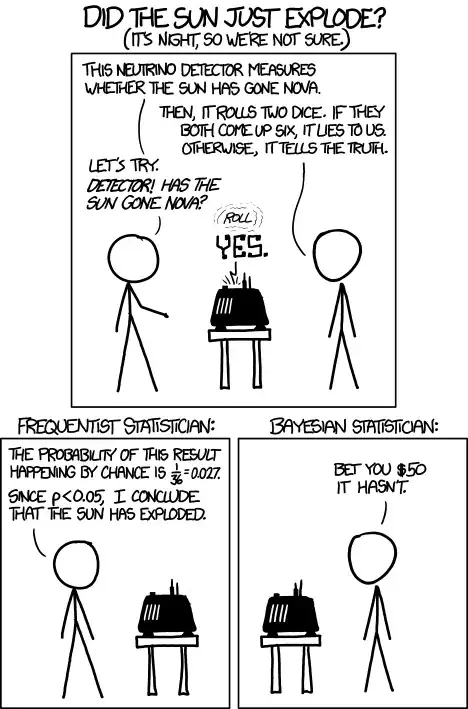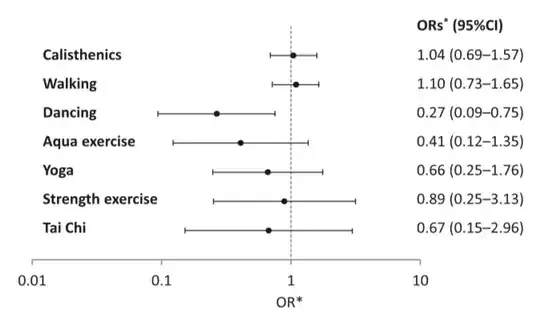Researchers in this article conducted a baseline survey of participants in these seven exercise programs and then tried to conduct a follow-up survey of the same participants eight years later. They were able to obtain follow-up survey responses from 1,019 participants and were unable to obtain follow-up responses from 910 participants.
This table shows how many (both in count form and percentage form) of these two groups of individuals (1,019 and 910) participated in each of the exercise programs. Then, the researchers conducted seven chi-square tests for independence between two categorical variables (whether someone responded to follow-up survey and whether someone participated in the given exercise program). The null hypothesis in those chi-square tests is that the two variables are independent, meaning that whether someone participated in a particular exercise program is independent of whether they responded to the follow-up survey. Small p-values indicate that there is in fact a dependence between the two variables.
The sentence you provided above the table does not appear to be worded correctly. Instead of saying "participants who were involved in some exercise were more likely to participate in the follow‐up survey", they should have said "individuals who participated in the follow-up survey were more likely to be involved in some exercise".

